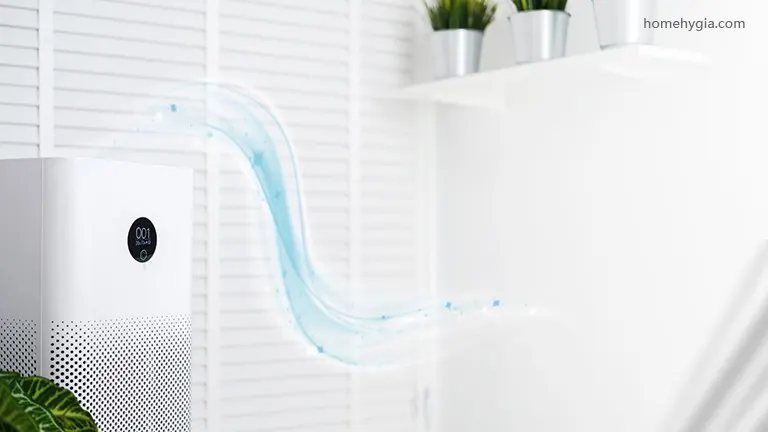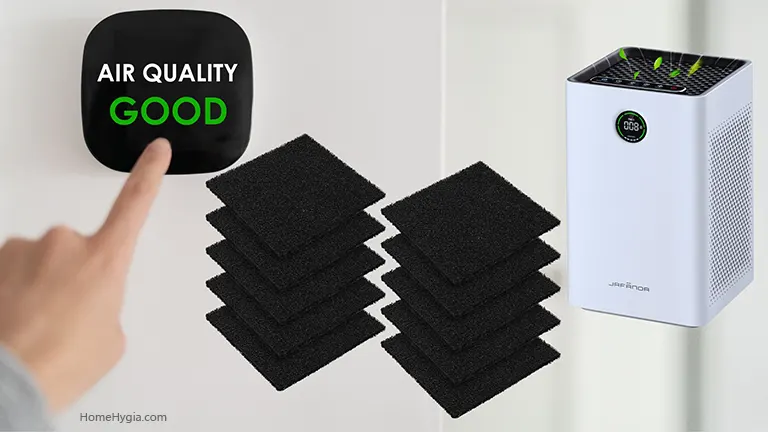Do you know, how activated carbon filters work? Okay, let’s talk about something that most of us have heard of but don’t really understand — activated carbon filters. You’ve probably encountered them in everything from your water pitcher to air purifiers, and if you’re like me, you might have just trusted that they worked without questioning the magic behind them. But today, I’m going to break it down, plain and simple.
So, what is activated carbon? And how does this stuff filter out bad stuff from air and water? Let’s dive into the science (don’t worry, I promise I’ll keep it chill) and explore how activated carbon works its filter-y magic.
Activated Carbon: The Silent Hero of Filtration
Activated carbon is a form of carbon that’s been processed to be super porous, giving it a massive surface area that can trap chemicals, toxins, and other nasty particles. It’s like that one friend who’s always picking up trash on the sidewalk — activated carbon is just constantly grabbing hold of whatever it can to make your environment cleaner.
Now, here’s the cool part: activated carbon doesn’t just sit there passively. It’s actually actively working to remove impurities from air and water through a process called adsorption (not absorption — trust me, there’s a difference). Adsorption is like when the carbon molecules “stick” to contaminants, like a magnet pulling in all the bad stuff. It doesn’t dissolve or absorb the particles; it holds on to them, making them harmless.
Let’s break it down further with an example.
A Quick Example of Activated Carbon in Action
Imagine you’re at home, sipping a glass of water. Now, picture that glass contains all the chlorine, pesticides, and even some heavy metals you don’t want to be drinking. Gross, right?
That’s where activated carbon comes in. You know those water filters we all love to have in the fridge? Many of them are packed with activated carbon. The carbon acts like a sponge, grabbing those chemicals and trapping them inside its tiny pores. You’re left with clean, fresh-tasting water.
But hold on — activated carbon isn’t just about water. Ever noticed how air purifiers often contain it? Well, the same process works with the air you breathe. Carbon filters pull out toxins, volatile organic compounds (VOCs), smoke, and even odors, making the air cleaner and fresher. So, if you’re battling that weird, stale smell in your house or trying to keep the air in your office free from harmful particles, activated carbon is doing its job.
Must read: Choosing the Best HEPA Carbon Filter Air Purifier
The Science Behind Adsorption (Don’t Freak Out, It’s Not That Complicated)
I know, I know—adsorption sounds like something you’d read in a chemistry textbook and immediately fall asleep. But stick with me! It’s really just a fancy term for how activated carbon holds on to stuff.
Picture a sponge with thousands of tiny holes all over it. When you dip it into water, the sponge can hold a lot of liquid, right? That’s a visual of how the surface area in activated carbon works. The more surface area you have (think tons of pores), the more stuff you can trap.
This ability to trap a bunch of stuff is why activated carbon is used in everything from drinking water filters to gas masks. It’s like a net for catching bad guys. But instead of criminals, the “bad guys” are things like chlorine, pesticides, bacteria, and volatile organic compounds. No big deal, right?

Types of Activated Carbon Filters: What’s the Difference?
Not all activated carbon filters are created equal. Yep, just like how some people can drink two cups of coffee without getting jittery while others turn into human rockets, activated carbon filters come in all shapes and sizes, depending on what they’re designed to filter.
Granular Activated Carbon (GAC) filters are the ones you’ll find in many household water filters. They’re made up of small granules of activated carbon. It’s kind of like tiny little pieces of charcoal packed together to grab onto chemicals and toxins.
Carbon Block Filters, on the other hand, are like a more concentrated version of the GAC filters. Instead of granules, the carbon is compressed into a solid block, which tends to make it better at filtering out smaller particles and chemicals. This is the type of filter you’d find in high-end water systems.
Then there’s catalytic carbon, which is like the VIP version of activated carbon. It’s treated in a special way to make it even better at removing specific contaminants, like chloramines (those pesky chlorine compounds you might find in your drinking water).
Real-World Uses for Activated Carbon
We’ve established that activated carbon is amazing for water and air filtration, but let’s take a look at a few other uses. You might be surprised at how versatile this material is!
- Medical Uses: Believe it or not, activated carbon is sometimes used in hospitals to treat poisoning or overdoses. It’s like an emergency filter for your body, absorbing toxins and chemicals before they can do more damage.
- Gas Masks: Ever wondered what’s in a gas mask? Activated carbon, of course! It’s crucial for protecting people from harmful airborne chemicals, whether it’s in wartime scenarios or hazardous industrial environments.
- Beauty Products: Yep, activated carbon has found its way into skincare. It’s great at drawing out impurities from your skin (think: charcoal face masks or toothpaste). It helps detoxify and cleanse, pulling out all the nasties from your pores.
- Fish Tank Filtration: Aquarium owners know the importance of clean water. Activated carbon filters help remove odors, toxins, and discoloration from aquarium water, ensuring your fish live in a fresh environment.
Recommended: Is UV-C Light Safe in Air Purifiers
FAQ Section: All Your Burning Questions About Activated Carbon Filters
Q: Can activated carbon remove viruses or bacteria?
A: Great question! While activated carbon can grab onto many chemicals and toxins, it’s not super effective at removing viruses or bacteria on its own. But it can help remove other harmful contaminants, which is why it’s often paired with other types of filters for a more comprehensive approach.
Q: How often do I need to replace my activated carbon filter?
A: This depends on how much use your filter gets. For water filters, you’ll probably need to replace the carbon every 3-6 months. For air purifiers, it’s generally a good idea to replace the filter every 6-12 months. You’ll notice that your filter starts losing its effectiveness when the carbon gets “full” of contaminants.
Q: Can activated carbon filters remove odors from pet smells?
A: Yes, they can! Activated carbon is fantastic at neutralizing odors, including pet smells, smoke, and cooking odors. It’s like a super-powered deodorizer that goes beyond just masking the scent and actually traps the offending particles.
Conclusion: Why Activated Carbon Filters Are Worth the Hype
So, here’s the deal: activated carbon filters are the unsung heroes in the world of filtration. Whether it’s in your water pitcher, air purifier, or even a hospital, this material is working hard to keep you healthy and safe. From removing chemicals to neutralizing odors, activated carbon does it all without making a fuss.
Next time you take a sip of water or breathe in that fresh air, you can thank activated carbon for making it all possible. And hey, now you know exactly how it works — pretty cool, right?
